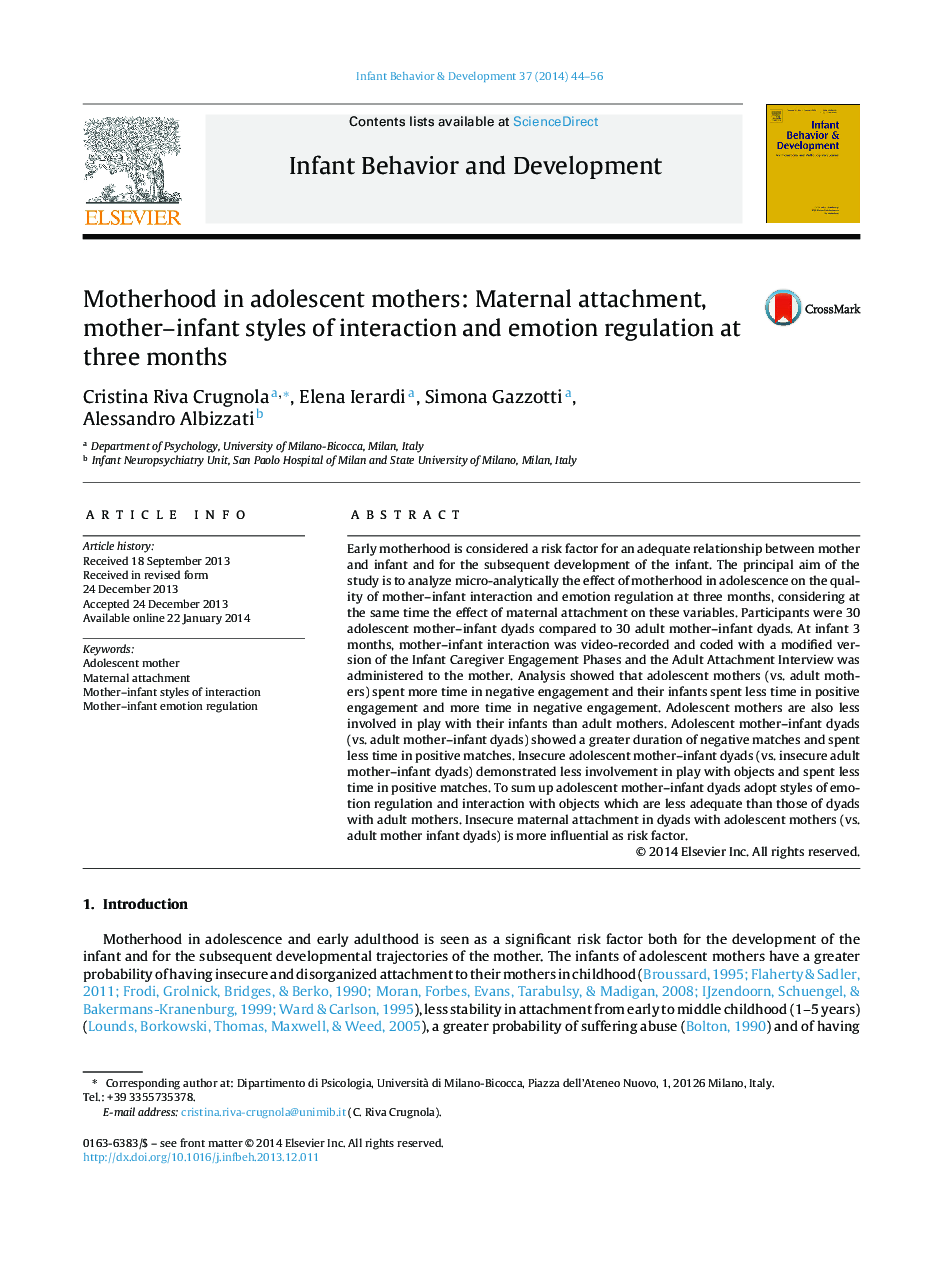| Article ID | Journal | Published Year | Pages | File Type |
|---|---|---|---|---|
| 917227 | Infant Behavior and Development | 2014 | 13 Pages |
•We analyzed adolescent mother–infant interaction and regulation at 3 months.•We compared adolescent mother–infant dyads with adult mother–infant dyads.•Adolescent mothers are less involved in play with their infants than adult mothers.•Teen mother–infant dyads showed more negative and less positive affective matches.•Insecure maternal attachment is a risk factor for adolescent mother–infant dyads.
Early motherhood is considered a risk factor for an adequate relationship between mother and infant and for the subsequent development of the infant. The principal aim of the study is to analyze micro-analytically the effect of motherhood in adolescence on the quality of mother–infant interaction and emotion regulation at three months, considering at the same time the effect of maternal attachment on these variables. Participants were 30 adolescent mother–infant dyads compared to 30 adult mother–infant dyads. At infant 3 months, mother–infant interaction was video-recorded and coded with a modified version of the Infant Caregiver Engagement Phases and the Adult Attachment Interview was administered to the mother. Analysis showed that adolescent mothers (vs. adult mothers) spent more time in negative engagement and their infants spent less time in positive engagement and more time in negative engagement. Adolescent mothers are also less involved in play with their infants than adult mothers. Adolescent mother–infant dyads (vs. adult mother–infant dyads) showed a greater duration of negative matches and spent less time in positive matches. Insecure adolescent mother–infant dyads (vs. insecure adult mother–infant dyads) demonstrated less involvement in play with objects and spent less time in positive matches. To sum up adolescent mother–infant dyads adopt styles of emotion regulation and interaction with objects which are less adequate than those of dyads with adult mothers. Insecure maternal attachment in dyads with adolescent mothers (vs. adult mother infant dyads) is more influential as risk factor.
